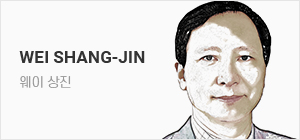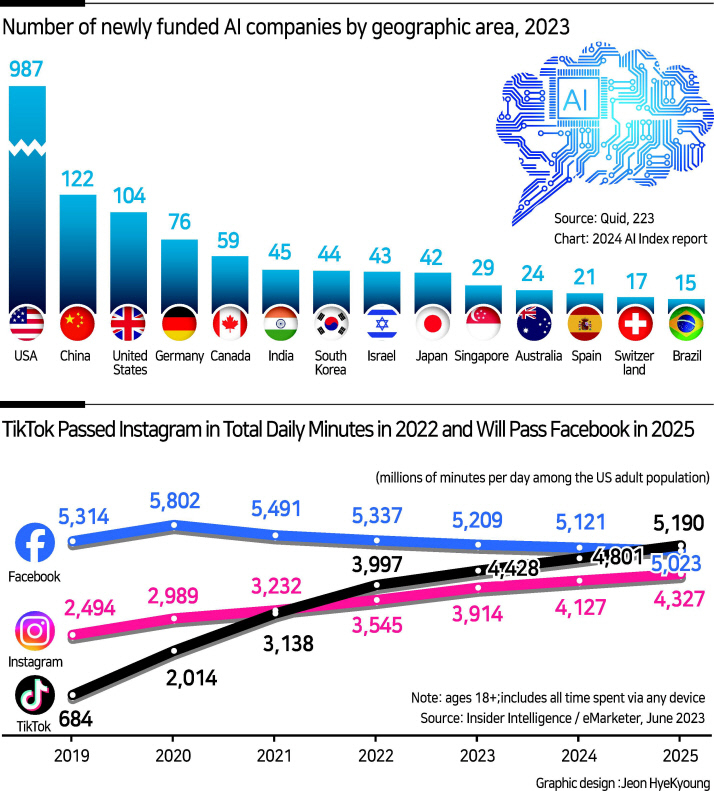

I will never forget my first visit to SK Telecom‘s T.um exhibition in Soeul when I was invited to speak at the National Assembly on launching the Quantum Information Communication Forum. What I saw was a dazzling vision of how technologies like 5G, AR/VR, and AI can change our world and make it better and more secure.
For the past decade the United States and China have been waging a high-tech “cold war” to determine the future not only of the world‘s economy, but humanity. Who wins, and who loses, will set the future of East Asia, as well.
China has a well thought out plan to win this contest. The United States does not. It‘s going to be up to the other advanced tech democracies like the Republic of Korea, Japan, and the members of the EU to help the U.S. find that winning strategy, so that we don’t all end up becoming mere tributaries to the Communist masters of the Middle Kingdom.
The recent furor in the U.S. over banning the Chinese social media platform TikTok is a part of this story, and not a small part. Indeed, the rise of TikTok has been a transformational moment in the evolution of social media. Now that Americans have finally taken TikTok seriously almost four years after I and others first sounded the alarm; and recognized the threat that TikTok poses in terms of gathering data on Americans that can be used by the Chinese military and intelligence services (despite the company‘s denials), the president and Congress have put together a law to ban the social media platform unless it sells itself to an American company.
Yet as has happened in this high-tech again and again, Americans have missed the real issue, or rather two issues.
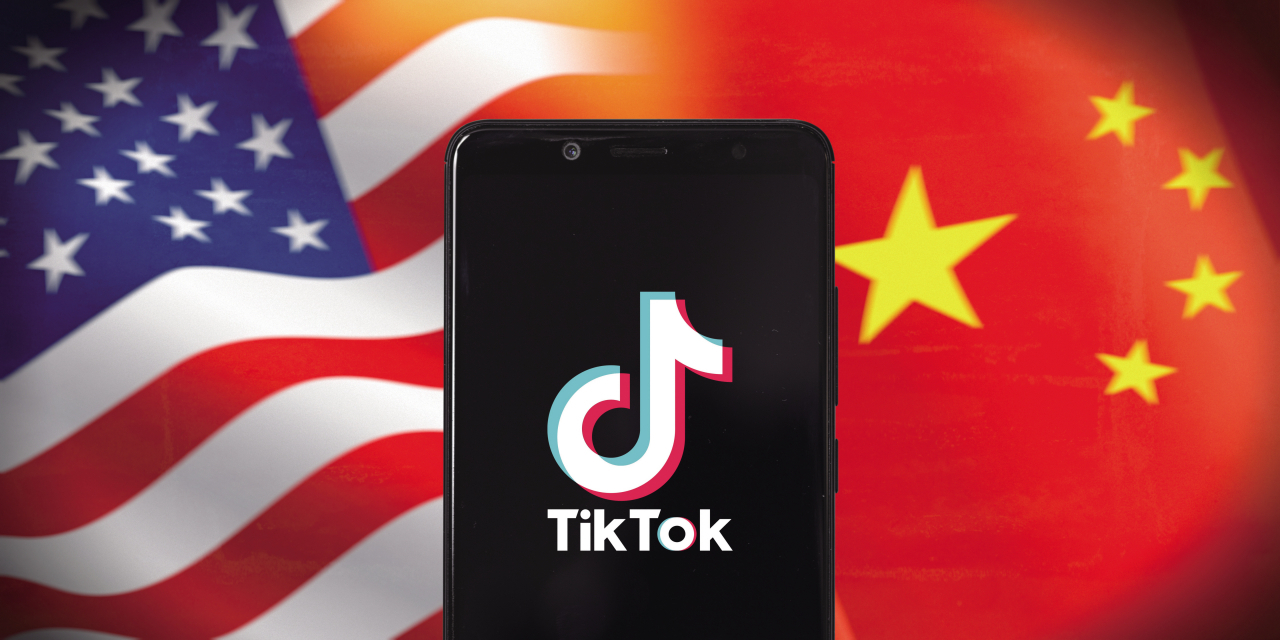
The first is that even more alarming than the data TikTok gathers from its 170 million American users (and over 1.5 billion users worldwide) is the algorithm TikTok uses to screen its users‘ preferences―an algorithm designed by its Chinese parent company ByteDance. The algorithm can use a few visual clues based on how long a user looks at a video to identify the piece of content a user is interested in. It then can give that user more and more of the same until their appetite is sated―if it ever is.
This is the algorithm that makes TikTok so addictive―and possibly dangerous. Even if TikTok does wind up being sold to an American buyer like Microsoft or Oracle or even Shark Tank celebrity Kevin O‘Leary, the platform will be useless without the algorithms, which ByteDance will be sure to hang on to.
As reporters for Forbes magazine found out, TikTok also has a so-called “heating button” its staff can use to boost specific posts and videos they want to appear viral― including propaganda supporting the Chinese Communist Party.
Yet the scandal surrounding TikTok is even bigger than that.
The fact that a Chinese-engineered app could sweep in and dominate the American tech space is not a good sign for the health of our vaunted high-tech sector. The real question should be, how did Chinese engineers manage to surge forward like this, while making Facebook and X and Instagram look like rank amateurs―even Google and Amazon.
There‘s a broader lesson here. Americans don’t have a plan to win the high-tech war with China because they‘ve been used to dominating the high-tech horizon for more than half a century, since World War Two in fact. Nuclear weapons and nuclear power; computers and semiconducting microchips; telecommunications and the Internet; even AI and the quantum computer; America has been the traditional leader in all these areas.
History shows that success can breed complacency. In the past decade China has surging ahead in high-tech production and innovation, of which the TikTok phenomenon is only part. Before that, China‘s effort in the high-tech arena was largely limited to cyber theft. Thanks to IP appropriated or stolen from foreign companies doing business in China, Beijing has the technical expertise to focus on developing their own platforms and algorithms, which are aimed directly at displacing the US as the world’s tech giant.From that perspective, the TikTok story is a narrative all too familiar in other realms of the high-tech universe.
In supercomputers, for example, the digital wonders whose amazing speed of computation are essential in industry, scientific research, and for the military, China has been surging ahead in development and deployment. In fact, from November 2017 until November 2022, China replaced the US as owner of the two best supercomputers in the world.
As of June 2023, however, the US had resumed its top position, and since then the number of US supercomputers has grown from 150 to 161, while China held a firm second spot at 104. But in fact, China has stopped sharing information about its supercomputing systems with the rest of the world. It may be because it has lost interest in the technology. Or it may be because China has big plans in these powerful workhorses of the digital age, that they prefer to keep secret―even while the US still thinks it has regained a comfortable lead.
| ||
| A chinese quantum satellite has sent ''spooky'' messages over a huge distance, potentially signalling the future of the internet. It harnesses the bizarre phenomenon of “quantum entanglement” where particles can affect another twin, far away in space. World''s first quantum satellite is launched in Jiuquan, Gansu Province, China, August 16, 2016 [REUTERS] |
A similar pattern exists in AI. The US is the founder of AI research and development, and still the global leader, especially in terms of numbers of start-ups. For the past seven years, however, China has been moving ahead with its plans to become the world‘s AI superpower. China’s generative AI spending is set to reach 33 percent of the world‘s AI investment by 2027, up from 4.6 percent in 2022 with the generative AI investments probably reaching $13 billion, according to a new report from Research firm IDC.
On AI research, for example, China produced about one-third of both AI journal papers and AI citations worldwide in 2021. In economic investment, China accounted for nearly one-fifth of global private investment funding in 2021, attracting $17 billion for AI start-ups. The gap with the US is still significant, but it‘s closing. And while Americans fret about whether AI will allow college students to cheat on their term papers, the Chinese are using AI applications to transform their industrial base and scale new heights of economic productivity.
Turning to 5G communication, for a time under the Obama administration it looked like Chinese tech equipment giant Huawei was running away with building the global networks that would support 5G use, including with NATO allies. Then some of us sounded the alarm about Huawei‘s access to the most important strategic commodity of all, data, which meant access for China’s military and intelligence establishment.
During the Trump administration there was considerable push back against Huawei, including banning use of Huawei phones and equipment and convincing allies not to opt for Huawei‘s attractive contracts. Then the effort slowed and stalled under the Biden White House.
For despite increasing success in pushing Huawei out of telecom systems internationally, the U.S. still faces many obstacles to removing Huawei‘s influence from 5G: including the fact to this date there is no American-led alternative. Indeed, small carriers in the U.S. continue to use Huawei equipment.
Nor has the anti-Huawei campaign stopped Huawei‘s growth. As of 2023, Huawei is still the world’s leading 5G equipment manufacturer. It controls more of the market share of 5G equipment than anyone else, and has built approximately 70% of worldwide 5G networks. Only 10 EU countries have so far joined the US-led Huawei ban, with Germany still weighing its options.
Meanwhile, the effort to keep advanced chips out of Huawei‘s hands also backfired. The U.S. has restricted exports of high-performance chips, including the latest AI chips ― including cutting-edge NVIDIA GPUs ― to China. The goal is to cripple China’s advances in AI, which require the latest chips. Washington also banned the export to China of chip-making equipment that can be used to make advanced mobile, AI, PC and server chips. But China‘s Huawei recently released a smartphone with its own 7-nanometer chip, which was thought impossible given the U.S. restrictions. It’s another example of how high-tech development in one area, flows into another.
This is also true of quantum technology, which promises an entirely new dawn for the high-tech era. For now, the US still has the lead in the quantum computer race thanks to private sector companies like IBM, Microsoft, Google, and Intel. But China dominates in terms of quantum communications, i.e. using entanglement-based quantum technology to create hack-proof messaging and networks, including operating two quantum satellites in space.
All this raises the obvious question: why is the US losing this all-important high-tech contest?
One reason is that decision-makers in Washington simply don‘t understand the technologies they are passing laws about, including AI and quantum. They also do not understand how to attract and incentivize America’s biggest and best tech companies to tackle our most pressing national security problems together, instead of just seeing 5G, AI, and space as another zone for competition with their commercial rivals. Chinese companies have no choice; they must obey Beijing‘s dictates to support China’s military and China‘s larger geopolitical strategy. The US government has to work to change the mindset of America’s companies first, in order to get their full-fledged cooperation and support. That‘s hard in an decision ecosystem dominated by lawyers and bureaucrats, instead of business leaders and tech experts.
The other problem is that the U.S. needs to realize that allies like ROK and Japan, can help to solve these challenges. This is why the current flap over the Line social media app is so unnecessary and misguided: it detracts from where attention should be really focused, on how we can all work together to build a democratic high-tech future.
Indeed, what I see on display in places like T.um and in companies like SK Telecom, LG, Samsung, and their Japanese counterparts is the kind of broad confident vision we all need today, in order to retake the lead in the high-tech war, not just for America‘s sake for the sake of freedom and democracy and security everywhere.
ARTHUR HERMAN is Senior Fellow at the Hudson Institute and Director of its Quantum Alliance Initiative.
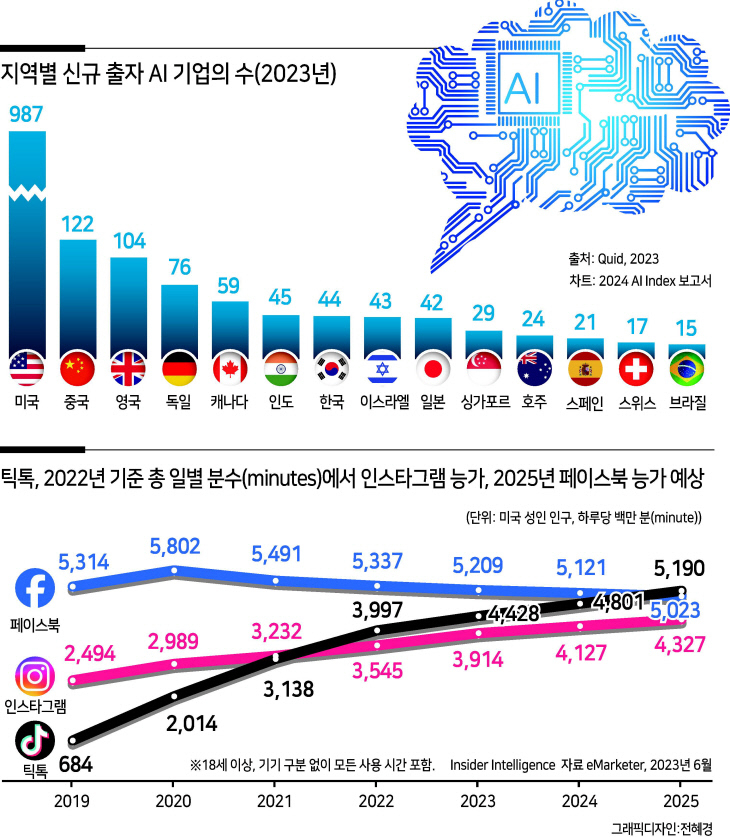

왜 미국은 중국과의 첨단기술 전쟁에서 패하고 있는가?
필자는 양자정보통신포럼의 창립에 맞춰 대한민국 국회에서 대담을 해달라는 초청을 받고 서울을 찾은 적이 있다. 당시 SK 텔레콤의 T.um(티움) 체험관을 처음 방문했던 일은 결코 잊을 수 없을 것이다. 그곳에서 필자는 5G, 증강현실/가상현실, 인공지능(AI)과 같은 기술이 바꿔 놓을 세상, 그것이 만들어 낼 더 안전하고 보다 나은 세상에 대한 눈부신 비전을 목격했다.
지난 10년간 미국과 중국은 세계 경제는 물론이고 인류의 미래를 좌우할 첨단기술의 ‘냉전’을 벌여 왔다. 누가 승자가 되고 패자가 될지에 따라 동아시아의 앞날도 결정될 것이다.
중국은 이 경쟁에서 승리하기 위해 면밀한 계획을 세워 뒀다. 미국은 아니다. 우리 모두가 중화 왕국(Middle Kingdom)의 공산주의 달인들에게 종속되지 않기 위해 미국의 승리 전략 모색을 돕는 것은 한국과 일본, EU 회원국처럼 다른 첨단기술 민주주의 국가의 손에 달려있다.
최근 중국 소셜미디어 플랫폼 틱톡(TikTok)에 대한 사용 금지 조치에 미국인들이 열렬한 지지를 보인 것도 이 이야기의 일부이며, 그 비중도 결코 작지 않다. 사실 틱톡의 부상은 소셜미디어의 진화 과정에서 일대 변혁이었다. 필자를 비롯한 일각에서 경고의 목소리를 낸 지 약 4년 만에 마침내 미국인들이 틱톡을 심각하게 받아들이기 시작했고, 틱톡이 미국인에 대한 데이터를 수집하고 있으며 중국 군·정보 기관이 이 데이터를 사용할 수도 있다는 점(틱톡은 이를 부인하고 있다)에서 틱톡의 위협을 인식하기 시작했다. 그러자 미국 대통령과 의회가 나서 틱톡을 미국 기업에 매각하지 않으면 틱톡의 서비스를 금지한다는 내용의 법을 마련했다.
그러나 첨단기술 분야에서 번번이 그렇듯, 미국인들은 본질적인 이슈, 그것도 두 가지 이슈를 놓치고 있다.

첫째, 틱톡이 1억 7000만 미국인 사용자(그리고 전 세계적으로는 15억 명의 사용자)에게서 데이터를 수집한다는 사실보다 훨씬 더 걱정스러운 것은 틱톡이 사용자 선호도 분석에 사용하는 알고리즘, 즉 틱톡의 모회사 바이트댄스(ByteDance)가 고안한 알고리즘이다. 이 알고리즘은 사용자가 영상을 응시하는 시간을 바탕으로 몇 가지 시각적 단서만 가지고도 사용자가 관심을 가지는 콘텐츠를 파악할 수 있다. 그런 다음 이 알고리즘은 사용자의 욕구가 충족될 때까지(충족이 가능하기나 하다면) 같은 종류의 콘텐츠를 계속 사용자에게 제공할 수 있다.
틱톡이 이렇게 중독적이고, 심지어 위험할 수 있는 이유가 바로 이 알고리즘 탓이다. 설령 틱톡이 마이크로소프트나 오라클, 심지어는 샤크탱크(Shark Tank, 사업 오디션 프로그램)의 스타 케빈 오리어리(Kevin O‘Leary)에게 매각된다 해도, 바이트댄스는 이 알고리즘을 절대 놓지 않을 것이고, 이 알고리즘이 없는 틱톡은 무용지물이 될 것이다.
포브스 매거진 기자가 밝혀낸 내용에 따르면, 틱톡에는 자발적으로 확산(viral)하는 것처럼 보이고 싶은 게시물이나 영상(여기에는 중국공산당을 지지하는 선전물도 포함된다)을 띄울 때 틱톡 직원이 사용할 수 있는 이른바 ‘히팅 버튼(heating button)’이 있다.
그러나 이것은 틱톡을 둘러싼 스캔들의 극히 일부에 불과하다. 중국이 만든 앱이 미국의 기술 분야를 휩쓸고 지배할 수 있다는 사실은 우리가 자랑하는 첨단기술 부문의 번영에 좋지 않은 징조다. 우리가 던져야 할 진짜 질문은 중국 엔지니어들이 어떻게 페이스북과 엑스(X·옛 트위터), 인스타그램, 심지어 구글과 아마존까지 초짜로 보이게 만들어 버리면서 이렇게 밀려들 수 있었나 하는 것이다.
여기에는 더 큰 교훈이 있다. 미국은 사실상 제2차 세계대전 이후 반세기가 넘게 첨단기술 분야를 지배하는 데 익숙해져 있다 보니 중국과의 첨단기술 전쟁에서 승리할 대책을 전혀 마련하지 않았다는 점이다. 핵무기와 원자력, 컴퓨터와 반도체 마이크로칩, 통신과 인터넷, 심지어 AI와 양자 컴퓨팅까지 미국은 지금까지 이 모든 분야에서 전통적인 리더였다.
그러나 역사가 증명하듯 성공에는 무사안일주의가 뒤따를 수 있다. 지난 10년간 중국은 첨단기술 생산과 혁신에서 앞서 나갔다. 틱톡 현상은 그 일부일 뿐이다. 그 전에 첨단기술 분야에서 중국의 활동은 대개 사이버 절도에 머물러 있었다. 그러다가 중국 당국은 중국에서 활동하는 외국기업으로부터 도용하거나 훔친 지식재산을 발판삼아 세계적 기술 대국 미국의 축출을 직접적인 목표로 한 독자적 플랫폼과 알고리즘 개발에 집중할 수 있는 기술적 전문성을 손에 넣었다. 그런 면에서 틱톡의 이야기는 첨단기술 세계의 다른 영역에서도 찾아볼 수 있는 너무나 익숙한 서사다.
가령 슈퍼컴퓨터는 산업, 과학연구, 그리고 군사 분야에서 필수인 놀라운 연산 속도로 디지털의 경이로움을 보여주는데, 중국은 그 개발과 활용에서 앞서 나가고 있다. 실제로 2017년 11월부터 2022년 11월까지는 중국이 미국을 제치고 세계 최고 성능의 슈퍼컴퓨터 두 대를 보유하기도 했다.
그러나 2023년 6월 기준, 미국이 선두 자리를 탈환했고, 그 후로 미국의 슈퍼컴퓨터 수는 150대에서 161대로 증가했으며, 반면 중국은 104대로 확고한 2위 자리에 머물렀다. 하지만 사실 중국은 자국 슈퍼컴퓨팅 시스템에 대한 정보를 더는 세상에 알리지 않고 있다. 이 기술에 대한 흥미를 잃은 탓인지도 모른다. 그게 아니라면 중국이 이 강력한 디지털 시대의 기계에 대해 원대한 계획을 갖고 있어서, 미국이 여전히 스스로 압도적 우위라고 착각하는 와중에 중국은 비밀을 유지하는 쪽을 택한 것인지도 모른다.
AI에서도 비슷한 패턴을 확인할 수 있다. 미국은 AI 연구·개발의 창시자이며, 특히 창업 기업 수에서 여전히 세계 1위를 달리고 있다. 그러나 지난 7년 사이, 중국은 세계적 AI 초강대국이 되기 위한 계획을 착실히 이행했다. 리서치 회사 IDC의 새 보고서에 따르면 중국의 생성형 AI 지출은 2027년이면 세계 AI 투자의 33%에 도달해 2022년보다 4.6% 상승하고, 생성형 AI 지출 규모는 약 130억 달러에 달할 것으로 보인다.
가령 AI 연구에서 중국은 2021년 기준 AI 학술지 논문 및 AI 인용 건수 모두에서 전 세계의 약 3분의 1을 차지했다. 경제적 투자 면에서 중국은 2021년 기준 세계 민간투자 자금의 약 5분의 1을 차지하며, AI 창업 기업에 170억 달러를 유치했다. 미국과의 격차는 아직 상당하지만, 점차 줄어들고 있다. 나아가 미국이 AI를 이용한 대학생들의 기말 리포트 표절을 걱정하는 사이, 중국은 각종 AI 애플리케이션을 이용해 자국 산업 기반을 혁신하고 경제 생산성의 신고점을 경신하고 있다.
5G 통신 이야기로 넘어가서, 오바마 행정부 시절에는 중국의 기술장비 대기업 화웨이가 나토 동맹국을 비롯해 5G 사용을 지원할 글로벌 네트워크 구축에서 압도적 선두를 달리는 듯 보일 때도 있었다. 이후 필자를 비롯한 일부에서 화웨이가 가장 중요한 전략물자인 데이터에 접근한다는 점(이는 곧 중국 군·정보 당국의 접근성을 의미한다)에 대해 경고한 바 있다.
트럼프 행정부 때는 화웨이 휴대폰과 장비의 사용을 금지하고, 동맹국에 화웨이의 매력적인 계약을 택하지 말아 달라고 설득하는 등 상당한 반격이 있었다. 그러다 바이든 행정부가 들어서면서 그런 활동이 둔화하고 중단됐다.
국제적으로 화웨이를 통신 시스템 밖으로 몰아내는 데는 점차 성공을 거두고 있지만, 지금까지 미국 주도의 대안이 전혀 없었던 점 등 여전히 미국이 5G에서 화웨이의 영향력을 지우는 데는 장애물이 산적해 있다. 실제로 미국의 소형 통신사들은 여전히 화웨이 장비를 사용하고 있다.
반 화웨이 캠페인으로 화웨이의 성장이 멈춘 것도 아니다. 2023년 기준, 화웨이는 여전히 세계를 선도하는 5G 장비 제조사다. 화웨이는 5G 장비 시장에서 가장 큰 점유율을 자랑하고 있으며, 세계 5G 네트워크의 약 70%를 구축했다. 지금까지 미국 주도의 반 화웨이 진영에 참가한 것은 EU에 속한 단 10개국밖에 되지 않으며, 독일은 여전히 선택지를 저울질하고 있다.
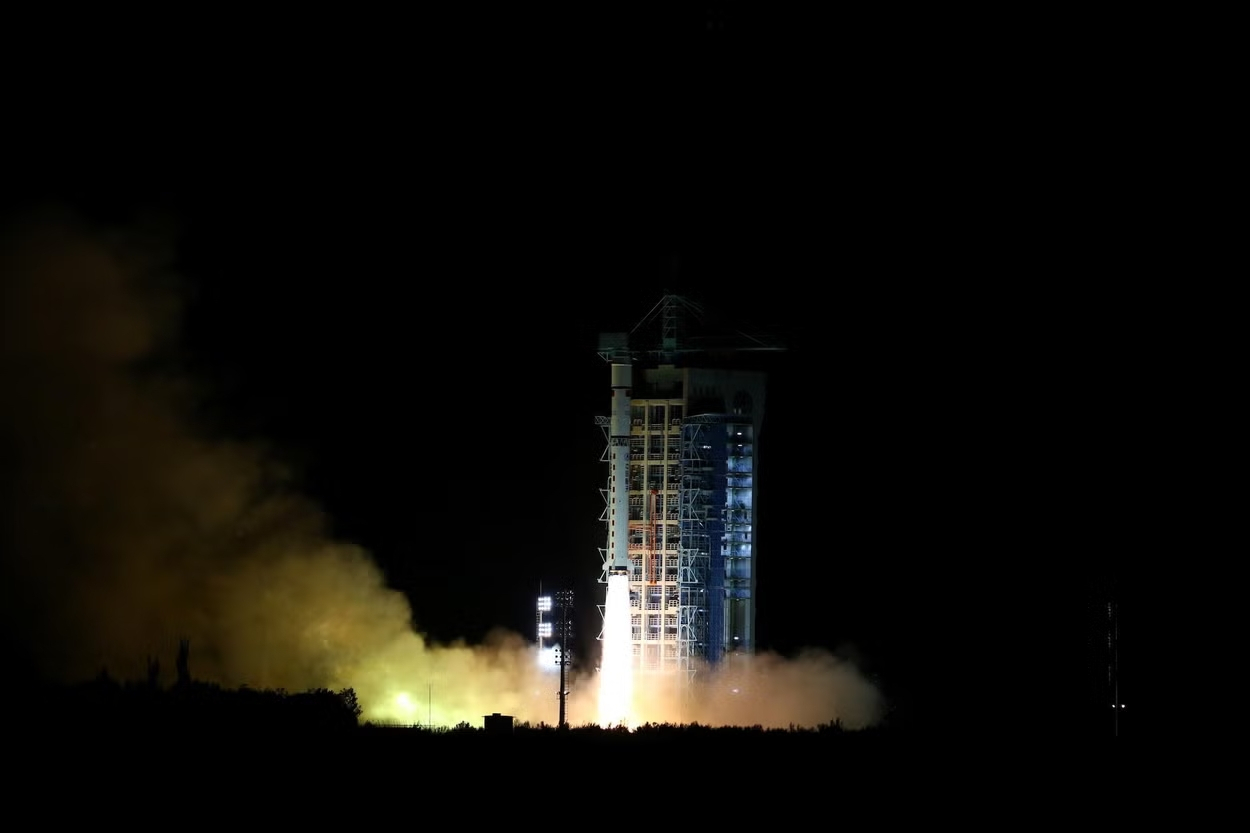
한편 화웨이의 손에서 첨단 반도체 칩을 뺏으려는 시도는 역효과를 낳기도 했다. 미국은 엔비디아의 첨단 그래픽처리장치(GPU) 등 최신 AI 칩을 비롯한 고성능 칩의 대중 수출을 제한했다. 최신 반도체가 필요한 AI 영역에서 중국의 전진을 방해하려는 심산이다. 미국 정부는 또한 첨단 모바일, AI, PC 또는 서버 칩 제조에 사용될 수 있는 반도체 칩 생산 장비의 중국 수출도 금지했다. 그러나 중국의 화웨이는 최근, 자체 개발한 7나노미터 칩을 탑재한 스마트폰을 발표했다. 미국의 제한조치를 생각하면 불가능하다고 여겨졌던 일이다. 이것은 한 영역의 첨단기술 발전이 어떻게 다른 영역으로 전파되는지 보여주는 또 하나의 사례다.
이것은 완전히 새로운 첨단기술 시대의 서막을 알리는 양자기술에서도 마찬가지다. 아직은 IBM, 마이크로소프트, 구글, 인텔과 같은 민간 기업에 힘입어 미국이 양자 컴퓨터 경쟁에서 우세한 상황이다. 그러나 중국은 우주 공간에서 두 대의 양자통신 위성을 운용하는 등 해킹이 불가능한 메시지 전달과 네트워크 구축을 가능케 하는 얽힘 기반 양자기술(Entanglement-based Quantum Technology)을 사용하며 양자통신 분야를 주도하고 있다.
이 모든 것은 하나의 명확한 질문으로 이어진다. 어째서 미국은 너무나도 중요한 이 첨단기술 경쟁에서 지고 있는가?
한 가지 이유는 워싱턴의 의사 결정권자들이 AI와 양자 등 각종 기술 관련 법을 통과시키면서도 정작 그 기술의 내용은 잘 모른다는 데 있다. 5G와 AI, 우주를 단순히 상업적 라이벌들과 다퉈야 할 또 하나의 경쟁 분야라고 생각하는 대신, 가장 시급한 국가안보 문제들을 함께 해결하기 위해 어떻게 미국 최대, 최고의 기술 기업들을 끌어들이고 성과보수를 제공해야 할지 잘 모르고 있다. 중국 기업들에는 선택권이 없다. 그들은 중국군, 그리고 중국의 더 큰 지정학적 전략에 협조하라는 중국 당국의 명령에 복종할 수밖에 없다. 미국 정부도 미국 기업들의 전폭적인 협력과 지원을 끌어낼 수 있도록 먼저 미국 기업들의 태도를 바꾸기 위해 노력해야 한다. 기업 리더와 기술 전문가가 아닌 변호사와 관료들이 결정을 좌지우지하는 생태계에서는 그것이 어렵다. 또 다른 문제는 한국이나 일본과 같은 동맹이 이 문제의 해결에 도움을 줄 수 있음을 미국이 자각해야 한다는 점이다. 소셜미디어 앱 라인(Line)을 둘러싼 최근의 사태가 너무나 불필요하고 방향성이 어긋난 것도 그런 이유다. 정말 관심을 집중시켜야 할 문제, 어떻게 하면 우리가 힘을 합쳐 민주주의적인 첨단기술의 미래를 건설할 수 있는가 하는 문제에서 주의를 분산시키기 때문이다.
사실 티움 같은 공간이나 SK 텔레콤, LG, 삼성 같은 기업, 그리고 그에 상응하는 일본 기업들에서 필자가 발견한 것은 단지 미국만이 아닌, 전 세계의 자유와 민주주의, 안보를 위해 첨단기술 전쟁의 주도권을 탈환하는 과정에서 현재 우리에게 필요한 폭넓고 확신에 찬 비전이다.
아서 허먼은 미국 허드슨 연구소에서 선임연구원 겸 연구소 양자동맹이니셔티브 이사를 맡고 있다.
bonsang@heraldcorp.com








